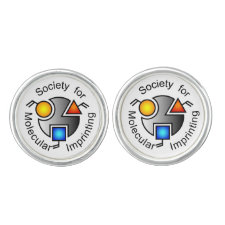
Authors: Weaver M, Dai S
Article Title: Proton imprinting via sol-gel captivated pH indicators.
Publication date: 2002
Journal: Journal of Undergraduate Research
Volume: 2
Page numbers: 97.
Alternative URL: http://www.scied.science.doe.gov/scied/JUR_v2/pdfs/Abstracts.pdf
Abstract: The various properties of sol-gel chemistry present many opportunities for nanoscale isolation and investigation. The encapsulation permitted by sol-gel chemistry has generated an interest in molecular imprinting. A fundamental experiment was conducted involving proton embedding in the sol-gel matrix. Several indicators, whose color varied with pH, were protonated (or deprotonated) in situ during sol-gel synthesis with acid (or base) catalysts. After the gel dried, with the indicator encapsulated, the gel was subjected to an analysis of visible light absorption as pH varied. An equation was derived from Beer's law and the Henderson-Hasselbach equation; this equation allowed straightforward determination of the equilibrium constant values for the proton gain or loss in the subject, embedded indicators. This analysis provided a direct comparison between established indicator equilibrium constant values in solution versus experimental sol-gel embedded indicator equilibrium constant values. Results indicate the sol-gel matrix confers protection to ionic species when free from extended aqueous storage, and subsequent chemical modification of the gel's surface with functional groups resulted in larger protection of the indicator. This experiment demonstrated the sol-gel's efficacy in surrounding and shielding charged ionic species on the molecular level.



Join the Society for Molecular Imprinting

New items RSS feed
Sign-up for e-mail updates:
Choose between receiving an occasional newsletter or more frequent e-mail alerts.
Click here to go to the sign-up page.
Is your name elemental or peptidic? Enter your name and find out by clicking either of the buttons below!
Other products you may like:
 MIPdatabase
MIPdatabase









